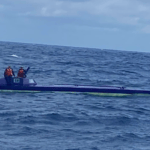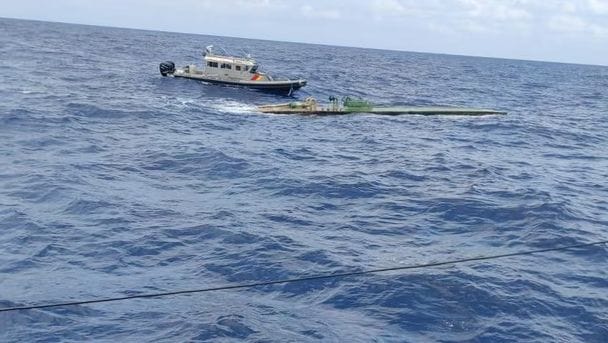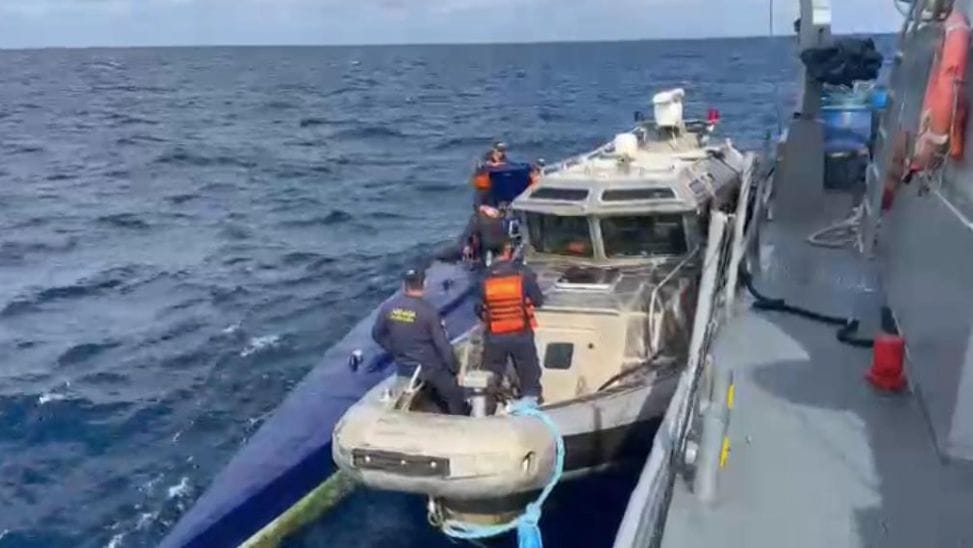
‘Narco sub’ route smashed in 62 country sting

Captain Manuel Rodríguez, director of the Colombian navy’s anti-narcotics unit, has delivered what could be the press statement of his year. He’s revealed that in a 62 cooperating countries sting, 225 tonnes of cocaine have been seized in the space of six weeks . . . with some intercepted from a new drug trafficking route to Australia via ‘narco sub’.
Rodríguez says that ‘narcos’ are innovating vessels and routes as demand for cocaine soars. High returns mean drug smugglers are incentivised to find new global pathways.
“They have improved the design of the semi submersibles and given them extra fuel capacity.”
Colombian officials have said that the boats are capable of sailing the distance of at least 16,000 kilometres without needing to refuel at sea.

“This is an important chunk of the cocaine trade, even when you consider the high amounts of the drug leaving the region,” Rodríguez told media. “This will prevent thousands of deaths from overdoses and $8.5bn from reaching the cartels, which definitely makes a hole in the profits of these criminal organisations.”
The recent Operation Orion stopped six semi-submersible vessels carrying cocaine and confiscated 1,400 tonnes of drugs in total. The interception is said to have deprived drug gangs of at least $8.4 billion, according to Colombia’s navy. And, at least 400 people were reportedly arrested in the overall operation which also stopped illegal shipments of weapons and caught migrant traffickers.
Agencies from cooperating partners added aeroplanes, helicopters and frigates into the operation’s pot, along with intelligence. In terms of the narco subs, naval officials waited for weeks at sea in small interceptor boats in the hope of finding shipments.

Patience paid off. Six semi-submersibles (generally these are 10-25 metres and sit very low in the water) were caught. At least one was destined for Australia.
“This is a new route that they have opened for semi-submersibles. One vessel was found in the middle of nowhere, close to 3,000 miles [4,800km] off the Colombian coast heading to Australia and New Zealand,” says Rodríguez. It had five tonnes of white powder on board 1,250 miles (2,000km) south-west of Clipperton Island.

This seemingly surprised Rodriguez as he mentions that Colombian drug traffickers usually only dare to ship 5 to 50kg to Australia concealed in cargo ships. This is the first time a semi-submersible has been found sailing to Oceania.
The boat had set sail from Tumaco, a port city on Colombia’s pacific coast, on its 4,000-mile journey.
Rodríguez believes that the international cooperation showed authorities can keep up with narcos in their ‘game’ and could mark a turning point for anti- narcotics operations.

“This is perhaps the largest seizure of cocaine in transit made by Colombia in history,” Colombian president Gustavo Petro said in a post on X.
Quizás este sea la mayor incautación de cocaína en tránsito hecha por Colombia en la historia.
— Gustavo Petro (@petrogustavo) November 27, 2024
¡14 toneladas de cocaína!
Felicitaciones a la Armada. https://t.co/8iR4TurfrI
All images courtesy of Colombian Navy, via social media feeds.
The post ‘Narco sub’ route smashed in 62 country sting appeared first on Marine Industry News.

